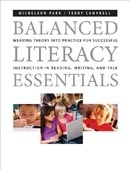Home Reading Kits
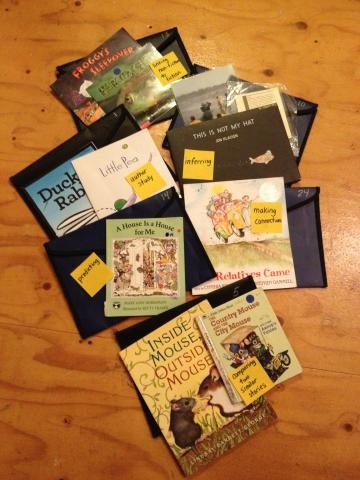
Inspired by the book Balanced Literacy Essentials, by Michelann Parr and Terry Campbell ( Pembroke Publishers Limited, 2012), I created these great Home Reading Kits for my Kindergarten class. Find out more about the book and how you can make similar kits, below.
Pembroke Publishers Limited, 2012), I created these great Home Reading Kits for my Kindergarten class. Find out more about the book and how you can make similar kits, below.
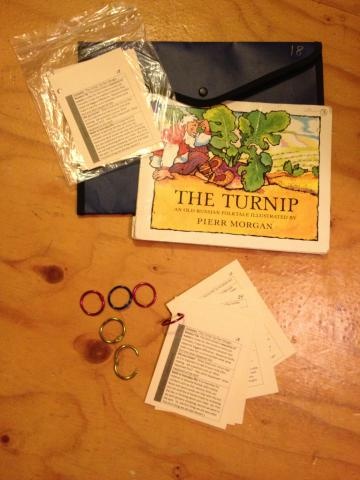
Balanced Literacy Essentials has a wealth of tips and ideas for promoting literacy, from developing literacy workshops to "Constructive Talk”. The book also includes many picture book lists to match various themes in the chapters. What I like best about the book is that every chapter has unique “Home-school connection” ideas. All of the strategies promote literacy practice, while encouraging parental involvement and dialogue. They also inadvertently keep parents informed of what their child is learning at school, and provide tips for supporting their child at home. The ideas are open enough that they can be used throughout the year with different themes, and in many ways can replace traditional homework. As opposed to most worksheets, these activities are meaningful and engaging for students who are growing as readers, writers, and thinkers.
Because I am always looking for ways to put more good quality books into the hands and homes of my students, I was very inspired by Balanced Literacy Essentials to create home reading packages for my kindergarten class. As pointed out on page 80 of the book, these reading packages are separate from the “I Can Read” beginning leveled readers I also send home. The home reading packages I created are meant for the parent to read to the child, and include a book (or two complimentary books), as well as a small tip sheet that they could keep. On our first ‘Meet the Teacher’ evening, I explained how we would use the home reading packages and gave each parent a key ring for them to add the tip sheets to, as they collected them each week.
I spent some time sorting through my personal library to find an assortment of good books to include. I made sure I had a variety of fiction and non-fiction, as well as books that clearly emphasised various aspects of comprehension such as making connections, predicting, inferring, and making mental images. The tip sheet had simple pointers to help the parents work on the related strategy with their child. Each tip sheet also included a ‘Math in Every Day Life’ component, with a simple activity that complimented the text and could usually be achieved without the need for additional props. 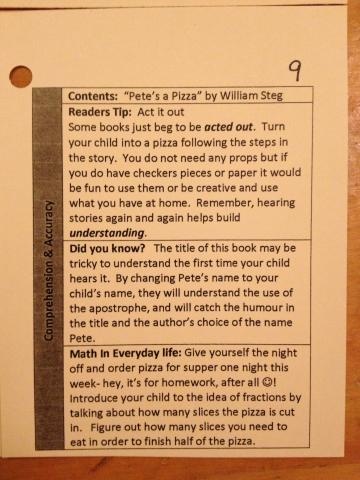
I used snap closure pocket folders from the Dollar Store and numbered them. I also numbered each book to match, in case of mix ups through the year. The tip sheets were also numbered to match. I made them small enough that I could fit 4 on a page to ease my photocopy load, copied them on cardstock for durability, and then hole punched them so they could be added to the key rings. Every week or two students received a new home reading package. I prepared about 5 packages more than the number of students I had, in case some packages were not returned on time. The children were always excited to receive a new package and enjoyed talking together about the books they had read.
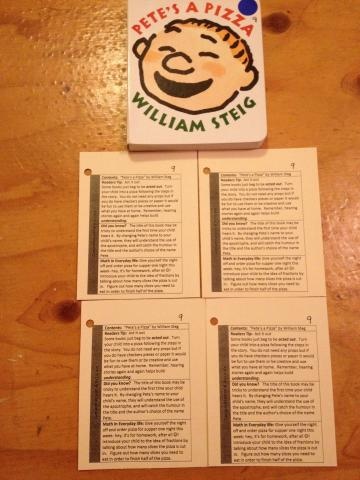 Click
Click  here to view the index cards for my entire set of 24 Home Reading Kits.
here to view the index cards for my entire set of 24 Home Reading Kits.
I encourage you to make similar packages for your class. While they do take a bit of time to prepare, once they are made they are ready for the year. Each year after that you simply need to add newly photocopied tip sheets.
At the end of the year I surveyed parents to get their opinion on the packages. The response was overwhelmingly in favour of them and many said that they wished they were available when their older children were in kindergarten. My goal with the home reading packages was to make good quality books available to my students, and to provide parents with simple strategies that, once they knew how to use them, they could transfer the same strategy to other books read with their children. I also wanted to promote talk as much as possible, and encourage families to have fun together while learning. I believe I accomplished all that and more, and I thank the authors of Balanced Literacy Essentials for pushing me to think more carefully about what I send home, and how best to support my students and their families.
 Although many parents read to their children daily, they often need support to extend the read-aloud beyond simply reading cover to cover.
Although many parents read to their children daily, they often need support to extend the read-aloud beyond simply reading cover to cover. 
p. 61
~Michelann Parr &
Terry Campbell,
Balanced Literacy Essentials: Pembroke Publishers Limited (2012)
